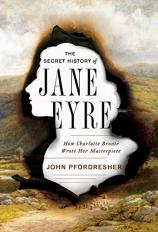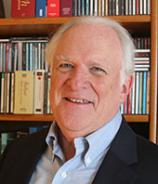The Secret History of Jane Eyre: How Charlotte Brontë Wrote Her Masterpiece
Review
The Secret History of Jane Eyre: How Charlotte Brontë Wrote Her Masterpiece
THE SECRET HISTORY OF JANE EYRE by Georgetown University English professor John Pfordresher is a well-researched biography detailing the genius and madness behind Charlotte Brontë’s timeless novel, JANE EYRE, the extent of its autobiographical nature, and those in her life who inspired the work of genius. The book sheds a fine light on Brontë’s world, which is more painful and unfulfilling than we ever could have imagined. Yet, with each of her experiences, breadcrumbs are thrown in front of her, leading to the day when she will start the novel that will keep her legacy alive forever.
At the onset of the biography, we are introduced to Brontë and her brother, Branwell, who create fantasy worlds together in their serial novel that is set in the imaginary land of Angria. This universe is her joy. Yet when she writes to poet laureate Robert Southey for advice, she’s thrust away from the world to which she had escaped for years. After sharing two of her poems, and her innermost feelings regarding writing, Southey tells her, "The day dreams in which you habitually indulge are likely to induce a distempered state of mind.” He continues to say that her Angrian world will prevent her from writing anything more. Since Brontë already suffers from depression, her anxiety concerning her mental state increases with this news. Southey carries on: “Literature cannot be the business of a woman's life: & it ought not to be. The more she is engaged in her proper duties, the less leisure will she have for it, even as an accomplishment & a recreation." He clearly does not know that Brontë is a force to be reckoned with, and that writing will be not only her business, but also her legacy.
"...a well-researched biography detailing the genius and madness behind Charlotte Brontë’s timeless novel, JANE EYRE, the extent of its autobiographical nature, and those in her life who inspired the work of genius."
Brontë grew up motherless, as her mother died when she was very young. She was raised by her father Patrick, an Irish priest who relocated to England. Throughout the book, Patrick is depicted as a stoic man who is not fond of emotion. He provides for his family and expects them to be proper and fulfill their duties. Yet his living children --- Charlotte, Emily, Anne and Branwell --- yearn to live a creative life. Brontë suffers extensively due to her poor financial status and inability to make money from writing. She must take governess jobs with families that are not more educated, but have more money than she does. In these homes, she is physically abused by the children, and emotionally and verbally abused by the matriarchs. These experiences draw similarities to Jane Eyre’s time in the Reed home, where she was mistreated by her male cousin.
Furthermore, Cowan Bridge, the institution Brontë attended with her sisters as a child, draws similarities to Lowood in JANE EYRE. Cowan Bridge was meant to be a Clergy Daughters’ School with a religious mission, but as Brontë insightfully noted, it did not adhere to the verses in the Bible that speak of peace, tolerance and love. Instead, the Brontë sisters were physically harmed and lived in treacherous conditions. Maria and Elizabeth became severely ill while at Cowan Bridge and died shortly after being sent home. Their deaths inspired the beloved Helen Burns in JANE EYRE. Brontë eventually leaves Cowan Bridge. She also leaves her first governess job on bad terms, and the second on better terms, yet she equally loathes both positions. She is a writer who yearns to be free from the clutches of toxic people and institutions, but does not yet understand the extent of her talents, and perhaps that’s what keeps her from seeing the bigger picture. That will soon change.
At the age of 19, Brontë returns to Roe Head as a teacher and meets the professor who will spark the candles of romance inside her: the married Monsieur Heger of Brussels. In Pfordresher’s biography, it is said that, in some ways, both Heger and Brontë’s father are the inspiration for Jane Eyre’s infamous love, Mr. Rochester. Since Heger was married and virtually ignored Brontë’s letters after she was no longer his pupil, Mr. Rochester was the wish fulfillment of a love that was not yet realized. Mr. Rochester’s stoicism and high sex drive are said to be characteristics drawn from Patrick, who was coarse and earnestly sought after women subsequent to losing his wife. Other characters in JANE EYRE are inspired by those who are real; one includes Branwell, who allegedly inspired the violent Bertha Mason. Branwell’s demise was tragic, as his alcoholism, addictions, wild ways and other factors led to his being overtaken by tuberculosis.
Elizabeth Gaskell's biography is said to be the gem that further immortalized Charlotte Brontë. Pfordresher thanks her --- and we thank them both for keeping this cherished author alive.
Reviewed by Bianca Ambrosio on July 7, 2017
The Secret History of Jane Eyre: How Charlotte Brontë Wrote Her Masterpiece
- Publication Date: June 27, 2017
- Genres: History, Nonfiction
- Hardcover: 256 pages
- Publisher: W. W. Norton & Company
- ISBN-10: 0393248879
- ISBN-13: 9780393248876





